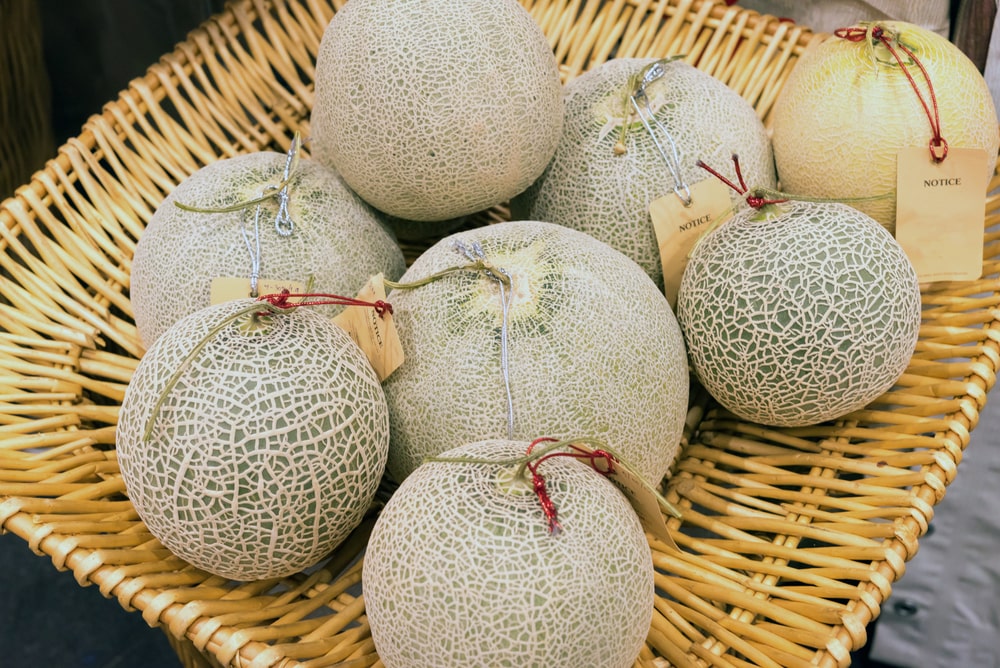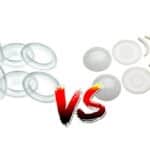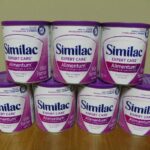Transitioning your baby to solid food is an exciting stage in their development and there are so many weird and wonderful foods for them to experience.
However, it also raises lots of questions. What should your baby be eating? How much of certain foods should they be eating? Are fish, berries, nuts, and meat safe for them?
Fruits and vegetables are generally a good place to start your transition to solid food. Most fruits and vegetables are either soft or can be prepared in this way and are easy for your baby to handle and digest.
One fruit that is a good starting place for weaning your baby is cantaloupe. It is a soft fruit with high water content, perfect for digestion, and easy to handle and eat.
Should Your Baby Be Eating Cantaloupe?
Absolutely! Cantaloupe is a member of the muskmelon family, that contains honeydew, canary, and casaba among other types of melon, and though they vary in color, shape, and size, the one thing all muskmelons have in common is a delightful sweetness!
You can give your baby small pieces to pick up and eat or puree some melon to offer them. They may not like the cantaloupe initially, but continue to include cantaloupe as part of a variety of fruits and vegetables.
Cantaloupe should ideally be introduced to your baby around six months of age when weaning begins.
One thing to note about cantaloupe is that it can carry harmful bacteria from the ground and has been known to cause diarrhea in babies.
With this in mind, it is advised to make sure you wash your cantaloupe well and start your baby off with a small serving.
You’ll get much more for your money if you buy a whole cantaloupe as opposed to pre-cut pieces and whole melons are much less likely to contain the harmful bacteria that can show up in pre-cut melon pieces.
Nutritional Benefits Of Cantaloupe For Babies
Cantaloupe is extremely healthy for both adults and babies. This breakdown offers nutritional information for an average serving of cantaloupe, which is around 155 grams.
Bear in mind that this is an average serving for an adult, and this much cantaloupe should not be given to a baby:
- Calories – 53
- Fat – 0.3 grams
- Carbohydrates – 13.7 grams
- Protein – 1.3 grams
Cantaloupe also contains vitamins A and C. These powerful antioxidants are crucial for supporting cellular repair, good eyesight, and strong immunity.
View in gallery
Compared to the popular honeydew melon, cantaloupe offers double the vitamin C and 67% more beta-carotene which is responsible for the bright orange color of the cantaloupe’s sweet and delicious flesh.
As well as offering all these key nutrients, cantaloupe is also beneficial in alleviating constipation in babies, due to its high water content.
This encourages movement in their digestive systems, however, it can sometimes be a little too encouraging so it’s wise not to overindulge your baby in cantaloupe.
Cantaloupe Preparation For Babies
Due to its firm and slippery texture, cantaloupe can be a choking hazard for babies. It’s important to remember to never use a melon ball scooper to prepare melon for babies as this is a prime mode of preparation for choking.
Cantaloupe should be refrigerated once it is cut, to avoid the breeding of harmful bacteria such as listeria and salmonella among others. The rind should also always be washed before cutting.
This avoids harmful bacteria and germs being pushed from the rind to the flesh as the knife cuts through.
From 6 to 9 months ensure you remove the rind and seeds before serving to your baby. In terms of the cut, either make small rectangle cuts roughly the width of a ruler or small crescent shapes that your baby can grip like a handle.
To encourage independence and self-feeding in your baby, hand them the pieces of canteloupe rather than placing them in a bowl or on their tray.
As your baby matures, around 9 to 18 months old, encourage them to practice the pincer grasp, where the forefinger and thumb meet.
The rectangles and crescents will still work well, however small bite-sized pieces will also help to promote consumption. Often babies will bite off too much, leading to spitting.
While this isn’t harmful to your baby, it does lead to wasting food. Giving them smaller bite-sized pieces will encourage your baby to eat them, rather than throwing or spitting.
When your child reaches between 18 and 24 months of age, they may be more able to handle larger wedges of cantaloupe that still have the rind. If this is the case, just remember to wash the rind thoroughly to avoid spreading bacteria or germs.
Choosing The Right Cantaloupe
As we’ve discussed, cantaloupe is a healthy and nutritious choice to aid in weaning your baby. But in order to reap the full benefits, you must make sure to choose a ripe cantaloupe.
You’ll know that your cantaloupe is ripe when the blossom end gives a little when pressed.
The Final Thought
Melon is a great addition to any child’s diet and as long as you are aware of the age limits and the safest way for them to eat it there is no reason that they can not enjoy it!






